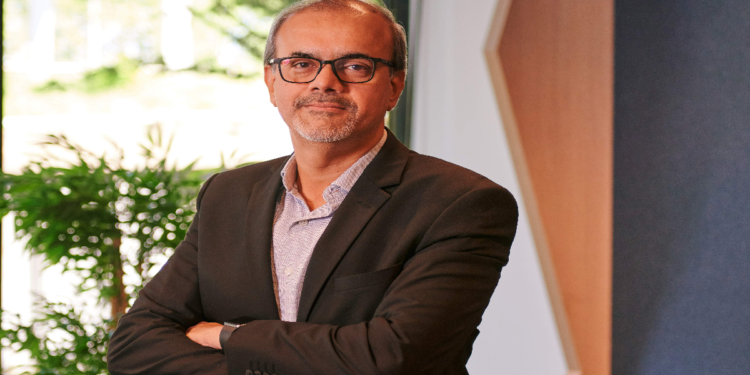Mumbai: Optimism axis lies with a handful of Global South countries, while more nations among the 29 nations covered in the survey are downbeat and pessimistic about the future prospects. The Ipsos What Worries the World March 2025 report places only a handful of nations in the optimistic list, with Singapore (81%) at the top, followed by Malaysia (69%), Indonesia (63%), India (62%), Argentina (59%), Mexico (58%) and Thailand (56%). Australia was more, middle of the road (48%), while 21 nations had higher pessimistic scores outweighing optimism. Further, only 37% of global citizens were pumped about the future of their countries.
Glaringly, in case of some nations, there were a minority of citizens who felt their country is doing well. Some of those nations, that were at the bottom of the optimism list were Peru (10%), France (15%), South Korea (17%), Germany (21%), Japan (21%) and a whole lot of others.

“There is a new global economic order – and global south is the new hot bed of growth, that is overtaking global north, relying on domestic consumption, with thriving emerging economies, which have headroom for growth. The evolved economies are already saturated and global economic slowdown and wars are impacting them more. India is a saga of nationalism and India Inc stepping up the game with domestic production gaining saliency and inward boom is steering the local economy,” said Amit Adarkar, CEO, Ipsos India.
The survey also ranks issues facing every nation. And Indians continued to be concerned about inflation and unemployment the most. And were least worried about Covid19, social programmes and military conflicts.

Global citizens too continued to be most concerned about inflation. Followed by Crime and violence. And they were least concerned about Access to Credit (2%) and Covid 19 (2%).
“Citizens continue to worry about high cost of living. Feeling strained financially for discretionary spends. With the new income tax policy coming into effect from April 2025, the salaried class should get some reprieve, at least in India,” added Adarkar.
In February 2025, 63% of Urban Indians said India is moving in the right direction and there was a double digit drop in worry around inflation (34%, -10%) and unemployment (30%, -13%) over January 2025. With sops and outlays announced in the budget by the finance minister.
Methodology
This 29-country Global Advisor survey was conducted between February 21st 2025 and March 7th 2025 via the Ipsos Online Panel system among 25,231 adults aged 18-74 in Canada, Israel, Malaysia, South Africa, Türkiye and the United States, 20-74 in Indonesia and Thailand, 21-74 in Singapore, and 16-74 in all other nations. The “Global Country Average” reflects the average result for all the countries where the survey was conducted. It has not been adjusted to the population size of each country and is not intended to suggest a total result.” The sample consists of approximately 1000+ individuals in each of Australia, Belgium, Brazil, Canada, France, Germany, Great Britain, Italy, Japan, Spain, Sweden, and the US, and approximately 500+ individuals in each of Argentina, Chile, Colombia, Hungary, Indonesia, Israel, Malaysia, Mexico, the Netherlands, Peru, Poland, Singapore, South Africa, South Korea, Thailand and Türkiye. The sample in India consists of approximately 2,200 individuals, of whom approximately 1,800 were interviewed faceto-face and 400 were interviewed online. The samples in Argentina, Australia, Belgium, Canada, France, Germany, Great Britain, Hungary, Italy, Japan, the Netherlands, Poland, South Korea, Spain, Sweden, and the US can be taken as representative of these countries’ general adult population under the age of 75. The samples in Brazil, Chile, Colombia, India, Indonesia, Malaysia, Mexico, Peru, Singapore, South Africa, Thailand and Türkiye are more urban, more educated, and/or more affluent than the general population. The survey results for these markets should be viewed as reflecting the views of the more “connected” segment of these populations. India’s sample represents a large subset of its urban population — social economic classes A, B and C in metros and tier 1-3 town classes across all four zones. Weighting has been employed to balance demographics and ensure that the sample’s composition reflects that of the adult population according to the most recent census data. The precision of Ipsos online polls are calculated using a credibility interval with a poll of 1,000 accurate to +/- 3.5 percentage points and of 500 accurate to +/- 5.0 percentage points. For more information on the Ipsos use of credibility intervals, please visit the Ipsos website. Where results do not sum to 100 or the ‘difference’ appears to be +/-1 more/less than the actual, this may be due to rounding, multiple responses, or the exclusion of don’t knows or not stated responses The publication of these findings abides by local rules and regulations.








